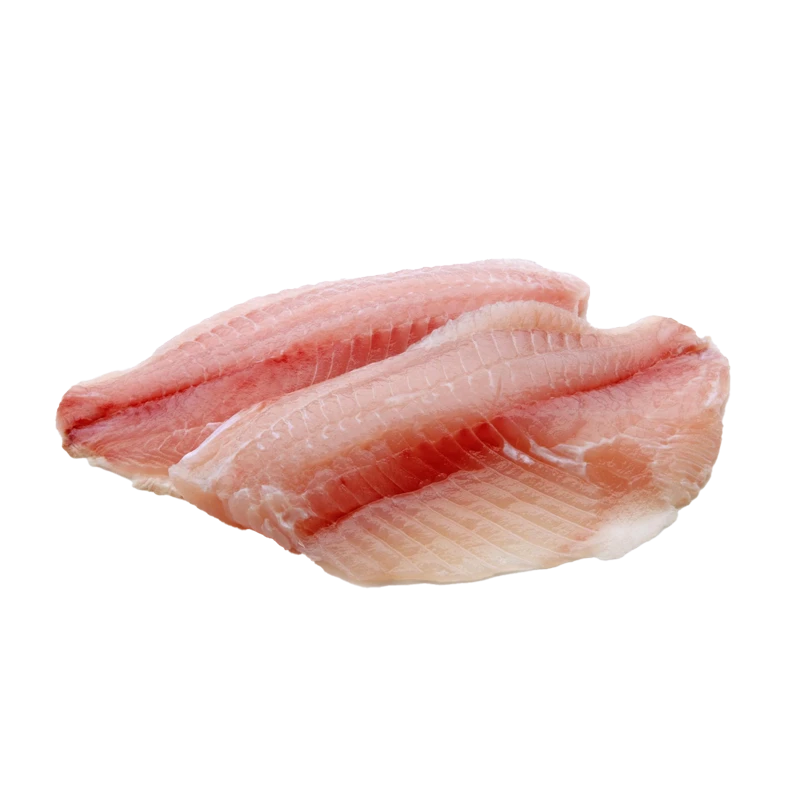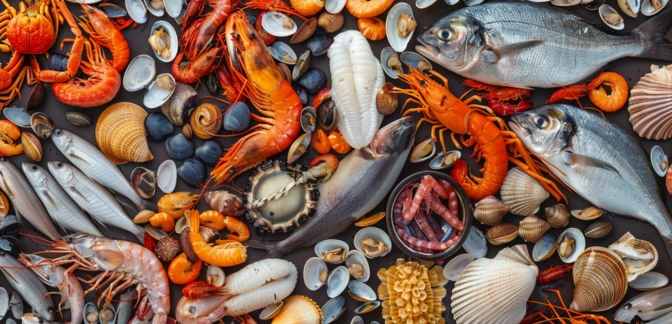Fish Fillet — Nutrients, Health Benefits, And Shopping Tips

Written by Listonic Team
Last update on September 6, 2024
Nutrition facts
Nutrition facts
Amount per 100 g
Calories
🔥 206 kcal
| Nutrition per: 100 g | Value | % Daily Value* |
|---|---|---|
| Carbs | 0 g | - |
| Fiber | 0 g | - |
| Sugars | 0 g | - |
| Glycemic Index | 0 | - |
| Protein | 22 g | 44% |
| Sodium | 60 mg | 2.61% |
| Total Fat | 12 g | 15.38% |
*The % of Daily Value (DV) tells you how much a nutrient in a serving of food contributes to a daily diet. 2,000 calories a day is used for general nutrition advice.
22 g
💪 High Protein Content
Did you know?
Health benefits
- Lean source of protein, providing essential amino acids necessary for muscle growth and repair.
- Low in fat (especially white fish fillets), making it a heart-healthy option.
- Rich in essential nutrients such as Vitamin B12, iodine, and selenium, supporting overall health and well-being.
- Supports heart health by providing omega-3 fatty acids (in fatty fish fillets) that help reduce inflammation and improve cardiovascular function.
- Easy to prepare and versatile, making it a convenient option for healthy meals.
Health risks
- Risk of contamination with harmful bacteria or parasites, particularly in raw or undercooked fish fillets, leading to potential foodborne illness.
- Potential for mercury contamination particularly in fillets from larger or predatory fish, which can pose health risks with excessive consumption.
- High sodium content if the fillet is processed, marinated, or seasoned with salt-heavy ingredients, which can contribute to hypertension and increased cardiovascular risks.
- Environmental concerns particularly for certain fish fillets, as overfishing or unsustainable farming practices can impact marine ecosystems and species populations.
How to choose fish fillet
Fish fillets should be moist and firm without any discoloration or dry spots. The edges should be clean-cut with no ragged areas. Check for any strong odors; fresh fish fillets should not emit a strong fishy smell.
Avoid fish fillets that appear slimy or have milky, opaque fluids on them, as these are signs of bacterial growth. Quality fish fillets should retain their shape when cooked and flake easily with a fork.

How to store fish fillet
Fish fillets need to be refrigerated as soon as possible and used within two days. Keep them in an airtight container or wrap tightly in plastic wrap to preserve freshness. Freezing is suitable for longer storage.
Exposure to air can lead to spoilage and loss of flavor. Fillets should be kept cold and away from strong odors. Avoid refreezing thawed fillets to maintain their texture and taste. Clean handling is crucial.
✅ Extra Tip
How long does it last?
Fish fillet can last for 1-2 days in the refrigerator when stored in an airtight container. For longer storage, fish fillets can be frozen for up to 6-8 months. Proper packaging, such as vacuum-sealing, helps maintain their quality over longer storage periods.
What to do with leftovers?
Leftover fish fillet can be used in a variety of dishes. Flake it and add to salads for a light and flavorful meal, or mix it into a pasta dish with a light sauce. Fish fillets are also great in fish cakes, where they can be combined with breadcrumbs, eggs, and seasonings, then fried until golden.
Use fish fillets in a stir-fry with vegetables and rice, or add them to a fish stew with tomatoes and herbs. If you have a lot of fish fillets, consider making a batch of fish tacos, topped with slaw and a tangy sauce. Fish fillets can also be used as a filling for sandwiches or wraps with fresh greens and a squeeze of lemon. For a unique twist, try using flaked fish fillets in a quiche or frittata for a savory breakfast or brunch.
👨⚕️️ Medical disclaimer
Discover products from other categories
Listonic Team
Fact-checked
Our editorial team checked this article to make sure it was accurate at the time of publishing it.
Get the top-rated shopping list app on your phone!







